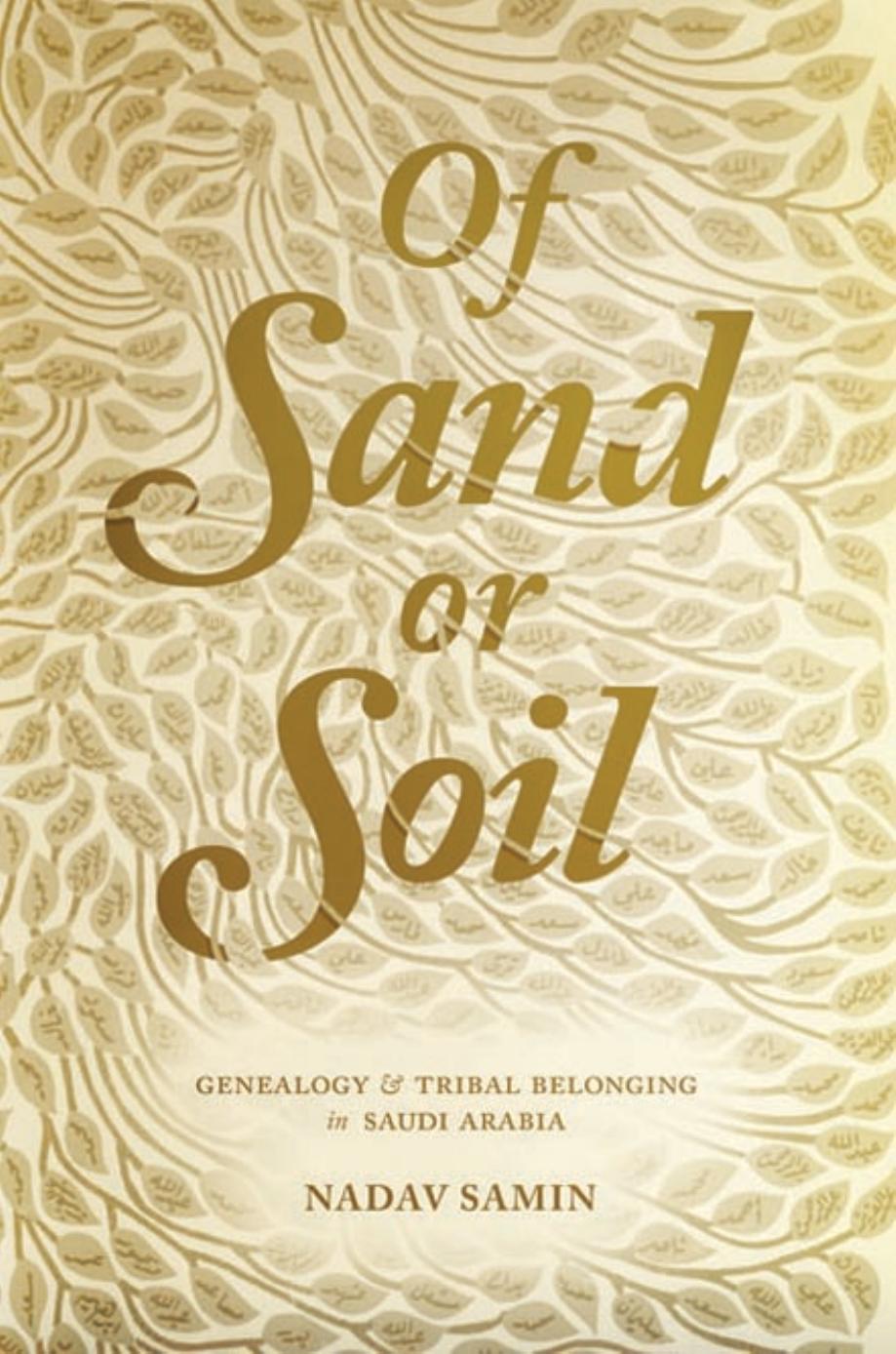Of Sand or Soil by Samin Nadav

Author:Samin, Nadav
Language: eng
Format: epub, pdf
Publisher: Princeton University Press
Published: 2015-03-08T16:00:00+00:00
NAMES, TRIBES, AND RACE
Invited one evening to a gathering in al-ʿUlā in December 2011, I was brought by a friend, ʿAwda, to meet the members of his social circle. I entered his shabba, or rest house,31 to find thirteen dark-skinned men in their late thirties or early forties, reclining against cushions along the walls and conversing quietly with one another. A giant flat-screen television was showing footage of protests in Bahrain, but all eyes were on the out-of-town guest. Taking a seat after greeting the group, one of its members took advantage of a pause in the ensuing discussion to ask if I had noticed anything in particular about the men, anything they had in common. When I hesitated, they began to laugh. A voice rose above the others, half in jest: “we all come from the same ancestor!” Two of the men I had greeted left for prayer shortly after. When they returned, I rose unaware to greet them again. “But you had already greeted us before!” they ribbed me. “We all look the same to him!”
Fourteen clans comprise the ʿAlāwna, as they were known to the outside world, and as they sometimes referred to themselves in documents.32 The Alsatian traveler Charles Huber, who visited al-ʿUlā in November of 1880, described its inhabitants as being “all negroes to varying degrees,” its population resembling “a mélange of negroes and Jews,” in the parlance of nineteenth-century European racial thought.33 Huber’s assessment was echoed in the accounts of Doughty, Jaussen and Savignac, and other Western visitors to the region. The ʿAlāwna, whose racial origins were perceived by Western travelers and bedouin alike to be different from those of the surrounding bedouin communities,34 maintained their own sedentary culture centered on the cultivation of the date palm. Their history, as an elderly imam with deep roots in the town informed me, was a history of “fallāḥīn,” peasant cultivators, who sang praise songs to their date trees as they ascended their trunks during pollination and harvest times. The ʿAlāwna recorded their qawāʿid (sing. qāʿidd), or customary laws, in detailed documents, the tradition of literacy, however rudimentary in its premodern expression, being a point of pride among the town’s historical inhabitants.
The economy of the town revolved around its many natural springs, such as ʿAyn Tidʿil. The leaders of the fourteen clans would gather daily in their respective qāhāwī, or council rooms,35 to discuss the latest news concerning the springs. If Tidʿil required maintenance, they would issue the call—“Tidʿil needs your help”—and the people would converge on the spring, dredging out its mud-plugged channels that distributed water to scores of small family plots, or shoring up its walls. It was in this same way that new homes in the old town were built, and old ones reinforced, without a penny exchanged. When money did change hands, it was most often for the leasing of a share of the water supply, in units called wajbas, sūds, or waraqas. After the many varieties of dates cultivated in al-ʿUlā, these units of water formed the principal commodity of the town.
Download
This site does not store any files on its server. We only index and link to content provided by other sites. Please contact the content providers to delete copyright contents if any and email us, we'll remove relevant links or contents immediately.
The Leavers by Lisa Ko(6472)
Born to Run: by Christopher McDougall(6259)
iGen by Jean M. Twenge(4702)
Sapiens by Yuval Noah Harari(4535)
The Kite Runner by Khaled Hosseini(4430)
Spare by Prince Harry The Duke of Sussex(4195)
Bullshit Jobs by David Graeber(3179)
Livewired by David Eagleman(3121)
Goodbye Paradise(2959)
Never by Ken Follett(2879)
A Dictionary of Sociology by Unknown(2517)
Harry Potter 4 - Harry Potter and The Goblet of Fire by J.K.Rowling(2416)
The Club by A.L. Brooks(2358)
People of the Earth: An Introduction to World Prehistory by Dr. Brian Fagan & Nadia Durrani(2346)
The Social Psychology of Inequality by Unknown(2309)
Machine Learning at Scale with H2O by Gregory Keys | David Whiting(2287)
Harry Potter and the Order of the Phoenix (5) by J.K. Rowling(2226)
0041152001443424520 .pdf by Unknown(2219)
Don't Sleep, There Are Snakes by Daniel L. Everett(2216)
